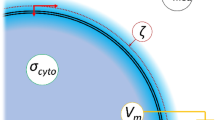Abstract
WE make a distinction between preparative and the usual counter-current distribution. By the latter we mean, of course, the very efficient method of separation based on extraction, devised chiefly by L. C. Craig1. With this method only a single addition of mixture to the apparatus is possible. This fact, although the amount added can sometimes be fairly large, limits the preparative value of the method. Several columns, working on a continuous basis (repeated or continuous addition of the mixture being possible) have been designed. These columns, however, lack the advantages of counter-current distribution where each cell is completely separated from the others. The principal advantages in this connexion are the easy mathematical interpretation and the possibility of stopping the operation at any time.
This is a preview of subscription content, access via your institution
Access options
Subscribe to this journal
Receive 51 print issues and online access
$199.00 per year
only $3.90 per issue
Buy this article
- Purchase on Springer Link
- Instant access to full article PDF
Prices may be subject to local taxes which are calculated during checkout
Similar content being viewed by others
References
Craig, L. C., Hausmann, W., Ahrens, E. A., and Harfenist, E., Anal. Chem., 23, 1236 (1951).
Verzele, M., Bull. Soc. Chim. Belg., 62, 619 (1953).
Author information
Authors and Affiliations
Rights and permissions
About this article
Cite this article
VERZELE, M., ALDERWEIRELDT, F. A New Glass Cell for Preparative Counter-Current Distribution. Nature 174, 702–703 (1954). https://doi.org/10.1038/174702a0
Issue Date:
DOI: https://doi.org/10.1038/174702a0
This article is cited by
-
An automatic apparatus for the polybuffer separation of substances (UPR)
Pharmaceutical Chemistry Journal (1968)
-
Der Mechanismus multiplikativer Verteilungsverfahren
Die Naturwissenschaften (1963)
-
Neuere Entwicklungen und Ergebnisse der Substanztrennung durch multiplikative Verteilung
Fresenius' Zeitschrift für analytische Chemie (1961)
Comments
By submitting a comment you agree to abide by our Terms and Community Guidelines. If you find something abusive or that does not comply with our terms or guidelines please flag it as inappropriate.



